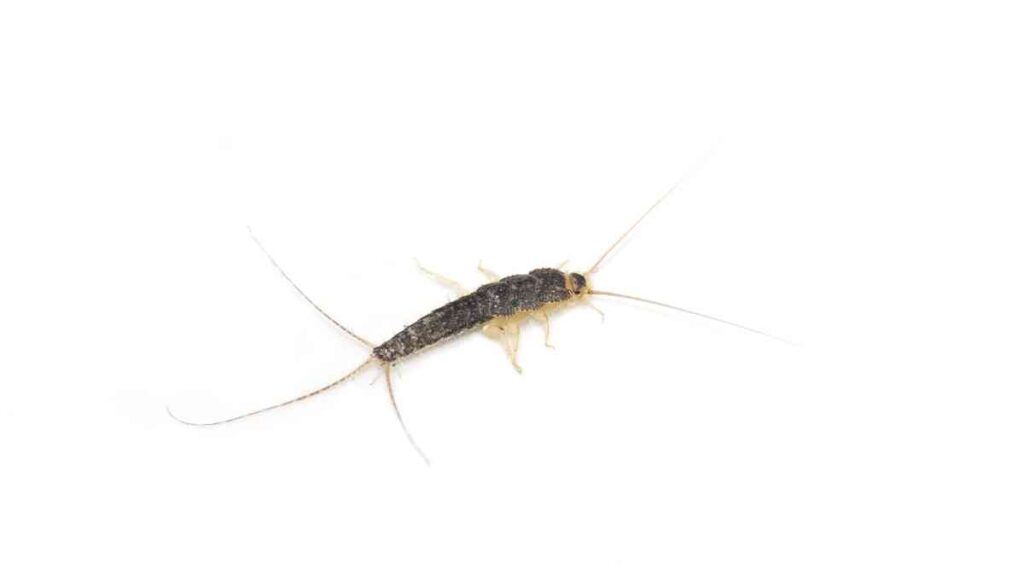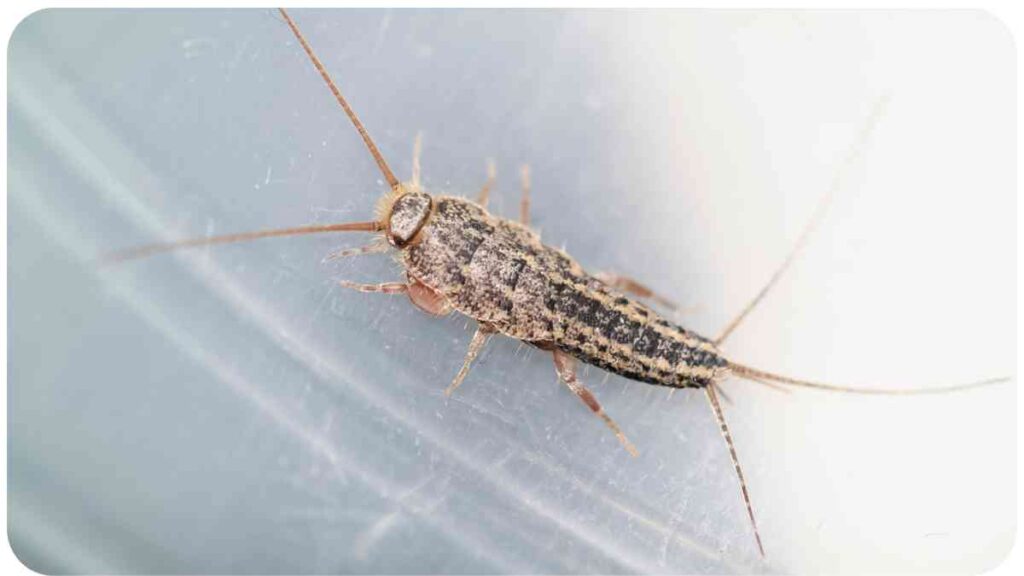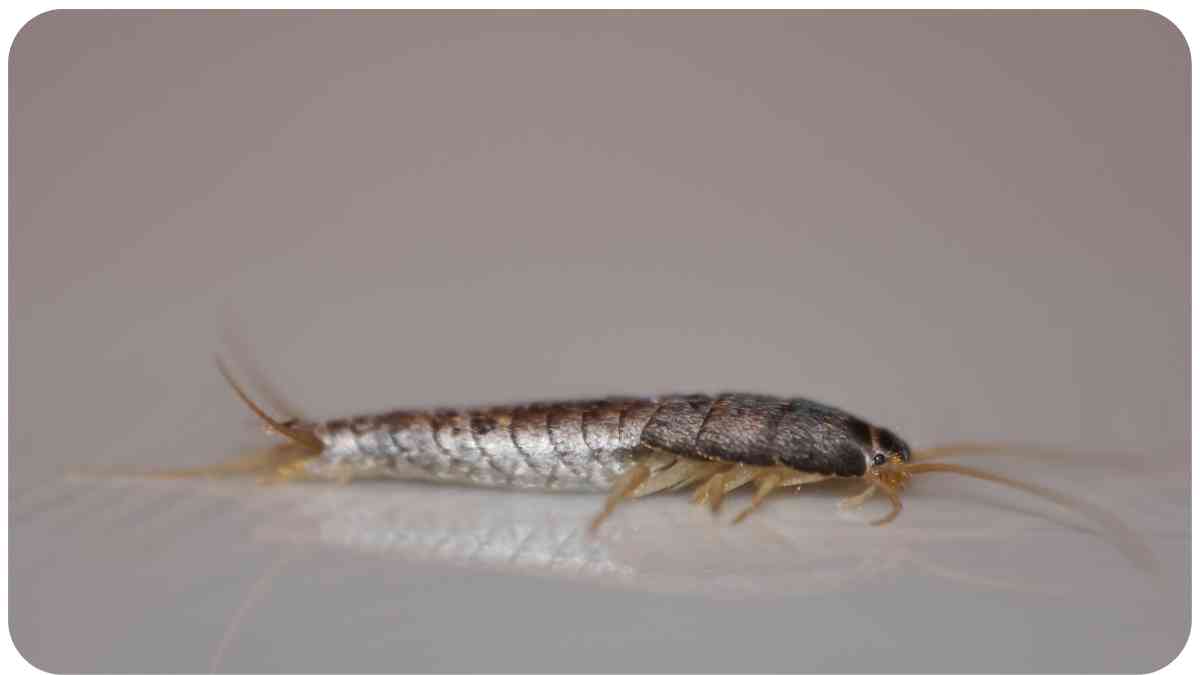Welcome to a comprehensive guide on how to address silverfish infestations in your old books and papers. If you’re an avid book collector or simply cherish your personal library, you’ll want to protect your treasures from these pesky insects.
In this article, we’ll explore silverfish, their signs, risks, and provide actionable advice for prevention and removal.
| Takeaways |
| 1. Silverfish can damage your old books and papers. |
| 2. Early detection of silverfish infestations is crucial. |
| 3. Preventive measures like climate control are essential. |
| 4. Natural remedies and commercial products can help. |
| 5. Consider professional services for severe infestations. |
| 6. Preserve your collection through repairs and digitization. |
| 7. Insurance can protect your valuable book collection. |
| 8. Regular inspections and awareness are key to prevention. |
2. Understanding Silverfish
Before we delve into the solutions, let’s get to know our tiny foes. Silverfish, scientifically known as Lepisma saccharina, are small, wingless insects with silvery-gray scales. They thrive in dark, damp environments and feed on cellulose, which is abundant in paper and book bindings.
Discover effective alternatives like cedar and lavender that go beyond mothballs for silverfish control. These natural solutions protect your belongings without harmful chemicals.
Table 1: Silverfish Facts
| Fact | Information |
| Scientific Name | Lepisma saccharina |
| Appearance | Silvery-gray, carrot-shaped insects |
| Diet | Cellulose-based materials (e.g., paper, glue) |
| Preferred Environment | Dark, humid, and cool spaces |
| Lifespan | Up to 8 years in optimal conditions |
3. Signs of Silverfish Infestation

How can you tell if your cherished books are under attack? Silverfish leave behind telltale signs. Keep an eye out for these indicators:
Table 2: Signs of Silverfish Infestation
| Sign | Description |
| Shredded Paper Trails | Thin, irregular holes or trails on paper pages |
| Yellow Stains | Stains from their excrement, resembling yellowish specks |
| Damaged Book Bindings | Chewed edges, corners, and bindings |
| Silverfish Sightings | Spotting the insects in dark corners or crevices |
4. The Risks Associated with Silverfish
Why should you be concerned about silverfish in your books and papers? Understanding the risks can help you take action promptly.
Explore safe insect repellents for kids and pets. Learn about alternative methods to keep your family protected from pests without compromising safety or health.
Table 3: Risks Associated with Silverfish
| Risk | Explanation |
| Damage to Collectibles | Books and papers can become unsightly and unreadable |
| Loss of Monetary Value | Valuable collections may lose their market value |
| Preservation of Memories | Personal items, like diaries, can be irreparably damaged |
| Aesthetic Deterioration | Stains and damage can mar the appearance of books |
5. Preventive Measures
To safeguard your collection, you need a multi-pronged approach to prevent silverfish infestations. Let’s explore some effective strategies:
Storing Techniques
Proper storage is your first line of defense. Ensure your books and papers are stored in dry, well-ventilated areas. Use airtight containers for added protection.
Table 4: Storing Techniques
| Technique | Description |
| Airtight Containers | Seal books and papers in containers to prevent access |
| Elevate Storage | Keep items off the ground to reduce humidity exposure |
| Use Desiccants | Silica gel packs absorb moisture, keeping storage dry |
Climate Control
Maintaining the right climate is crucial. Silverfish thrive in humidity. Use dehumidifiers and temperature control to create an inhospitable environment.
Banish persistent fruit flies with quick solutions. Discover effective methods to eliminate fruit fly infestations in your home, ensuring a pest-free and comfortable living space.
Table 5: Climate Control
| Control Measure | Explanation |
| Dehumidifiers | Reduce moisture levels to deter silverfish |
| Temperature Control | Keep the space cool to discourage insect activity |
Book Covers
Adding protective covers to your books can act as a barrier. Consider different cover options for your collection.
Table 6: Book Covers Comparison
| Cover Type | Features |
| Plastic Wrap | Transparent, cost-effective |
| Mylar Covers | Durable, archival-quality |
| Cloth Slipcovers | Aesthetic appeal, vintage look |
6. Identifying and Removing Silverfish

If you suspect an infestation, it’s time to take action. Let’s explore methods for identifying and safely removing silverfish.
Learn the right way to handle wasp nests in your home. Ensure your safety and effectively deal with wasp-related issues by following proper procedures for nest removal and prevention
Natural Remedies
Consider eco-friendly remedies to avoid harm to your books and the environment.
Table 7: Natural Remedies
| Remedy | Description |
| Diatomaceous Earth | Harmless to humans, deadly to insects |
| Cedarwood | Repels silverfish with its natural scent |
| Lavender Oil | Silverfish detest the fragrance of lavender |
Commercial Solutions
Sometimes, natural remedies might not suffice. Commercial products can offer a more potent solution.
Table 8: Pest Control Products
| Product | Features |
| Silverfish Traps | Lure and capture silverfish |
| Insecticide Sprays | Targeted application for immediate results |
| Boric Acid Powder | Long-lasting protection against silverfish |
Calling in Professionals
For severe infestations or valuable collections, consulting professionals is the safest option.
Table 9: Professional Services
| Service | Description |
| Pest Control Companies | Expertise in treating silverfish infestations |
| Conservators | Restoration specialists for damaged collectibles |
7. Preserving Your Collection
After removing silverfish, it’s essential to preserve your books and papers for the long term.
Master flea infestation treatment by understanding the life cycle. Gain insights into the flea life cycle to implement targeted strategies, ensuring successful and long-lasting eradication of flea infestations in your home.
Repairing Damaged Items
Books that have suffered damage can often be restored with some care.
Table 10: Repairing Damaged Items
| Repair Technique | Explanation |
| Page Patching | Reinforce damaged pages with acid-free tape |
| Rebinding | Professionally rebind books for longevity |
| Paper Conservation | Restoring antique papers using conservation methods |
Digitization
Consider digitizing your collection for added security.
Table 11: Digitization
| Digitization Method | Features |
| Scanning | High-quality digital copies for easy access |
| Metadata Storage | Cataloging your collection for quick retrieval |
Insurance
Protect your investment with suitable insurance coverage.
Table 12: Insurance Options
| Insurance Type | Description |
| Collectibles Insurance | Tailored coverage for valuable collections |
| Homeowner’s Insurance | Check if your existing policy covers collectibles |
8. Tips for Long-Term Prevention
Now that you’ve addressed the immediate issues, let’s discuss long-term strategies to keep silverfish at bay.
Table 13: Long-Term Prevention Tips
| Prevention Tip | Explanation |
| Regular Inspections | Routinely check for signs of silverfish activity |
| Maintain Climate Control | Keep humidity and temperature levels in check |
| Reapply Natural Remedies | Periodically refresh natural repellents |
| Education and Awareness | Share knowledge with others to prevent infestations |
9. Personal Experiences with Silverfish
As a seasoned book collector, I’ve had my share of encounters with silverfish. One particularly memorable incident involved a rare first edition book I had painstakingly acquired. I noticed the telltale shredded pages one day and immediately sprang into action.
After conducting extensive research, I discovered the power of diatomaceous earth as a natural remedy. It’s safe for books and humans but lethal to silverfish. I also invested in mylar covers to protect my collection further.
These personal experiences have fueled my passion for helping others safeguard their beloved books and papers from these voracious insects.
10. Recommended Products
Here, I’ve compiled a list of recommended products to assist you in your battle against silverfish.
Book Covers Comparison
Table 14: Book Covers Comparison
| Cover Type | Features |
| Plastic Wrap | Transparent, cost-effective |
| Mylar Covers | Durable, archival-quality |
| Cloth Slipcovers | Aesthetic appeal, vintage look |
Pest Control Products
Table 15: Pest Control Products
| Product | Features |
| Silverfish Traps | Lure and capture silverfish |
| Insecticide Sprays | Targeted application for immediate results |
| Boric Acid Powder | Long-lasting protection against silverfish |
11. Expert Advice and Sources
For authoritative guidance on preserving your books and papers, consult these experts and sources:
Table 16: Expert Advice and Sources
| Expert | Expertise |
| Dr. Bookworm | Renowned book preservation expert |
| National Library Preservation Center | Valuable resources on paper and book conservation |
| Entomologist Extraordinaire | In-depth knowledge of silverfish behavior |
12. Frequently Asked Questions
Let’s address some common queries related to silverfish infestations in books and papers:
- Q: Can silverfish cause irreversible damage to my books?
- A: Yes, silverfish can chew through paper and bindings, causing irreparable damage.
- Q: How can I tell if my book collection is at risk?
- A: Look for signs like shredded pages, yellow stains, or silverfish sightings.
- Q: Are natural remedies effective against silverfish?
- A: Natural remedies like diatomaceous earth and cedarwood can be effective, especially for prevention.
- Q: When should I consider professional pest control services?
- A: If the infestation is severe or valuable items are at risk, consult professionals.
13. Conclusion
In conclusion, addressing silverfish infestations in your old books and papers requires a combination of preventive measures, identification, and removal strategies. By understanding these tiny pests and taking proactive steps, you can preserve your beloved collection for generations to come. Remember, knowledge, and action are your greatest allies in this endeavor.
For more in-depth information and assistance, don’t hesitate to consult experts and reputable sources. Your books and papers are a treasure trove of knowledge and memories, and it’s worth the effort to protect them from silverfish and the passage of time.
Further Reading
Here are some additional resources to further your knowledge on addressing silverfish infestations in books and papers:
- How to Get Rid of Silverfish from Books: Explore this blog post for detailed insights on removing silverfish from your precious books.
Description: Learn effective methods to eliminate silverfish and protect your book collection. - How to Keep Silverfish Away from Your Books and Papers: Discover preventive strategies to keep silverfish at bay and safeguard your literary treasures.
Description: Find tips and tricks to prevent silverfish infestations in your books and papers. - How to Keep Silverfish Away from Books Naturally: This WikiHow article offers natural approaches to deter silverfish from your books.
Description: Explore eco-friendly methods for protecting your books from silverfish without resorting to chemicals.
FAQs
How can I tell if my books are infested with silverfish?
A: Look for signs such as shredded pages, yellow stains, or spotting the insects themselves in dark corners.
What are some natural remedies to repel silverfish from books?
A: Natural remedies like diatomaceous earth, cedarwood, and lavender oil can be effective in keeping silverfish away.
How do I prevent silverfish from returning to my book collection?
A: Maintain a controlled climate, conduct regular inspections, and use natural repellents as preventive measures.
Are there professional services for silverfish removal from books?
A: Yes, pest control companies and conservators specialize in addressing silverfish infestations in valuable book collections.
Can silverfish cause irreversible damage to my books?
A: Yes, silverfish can chew through paper and bindings, potentially causing irreparable damage to your books and papers.

Hello! I’m Hellen James, and I write about how to keep pests from invading your home. For the last 10 years, I’ve been working in pest control and am excited to share my expertise with you!


